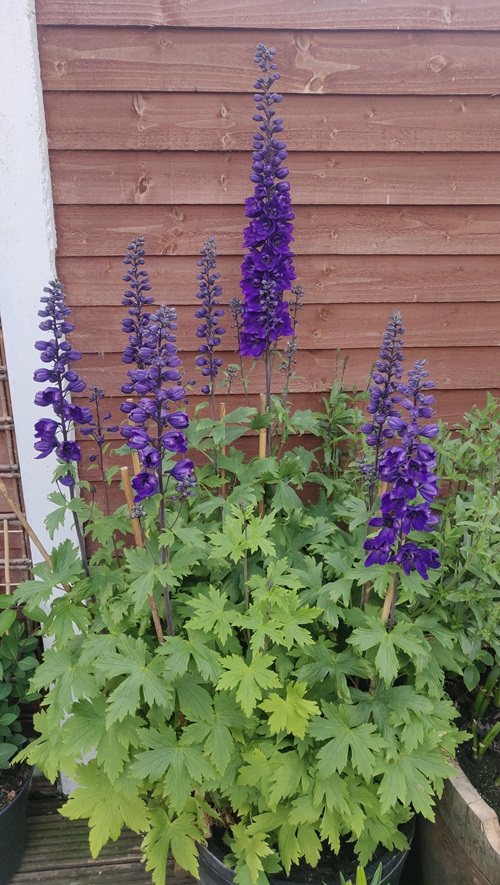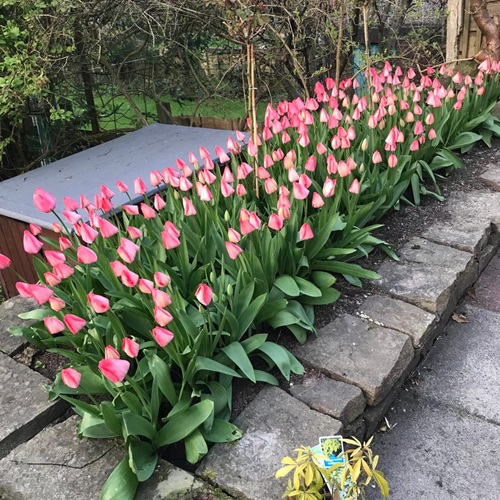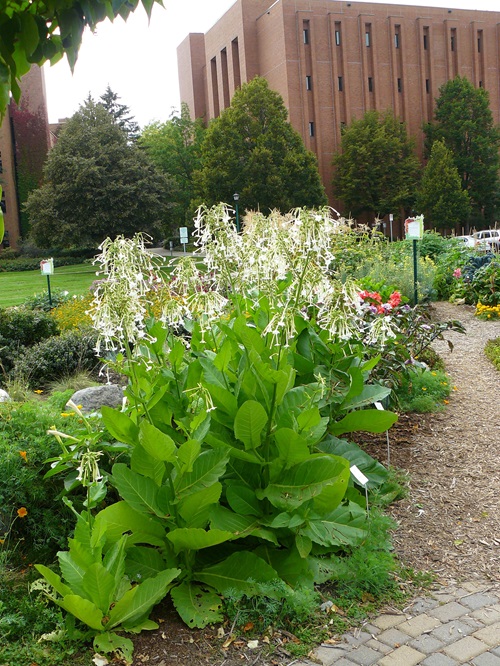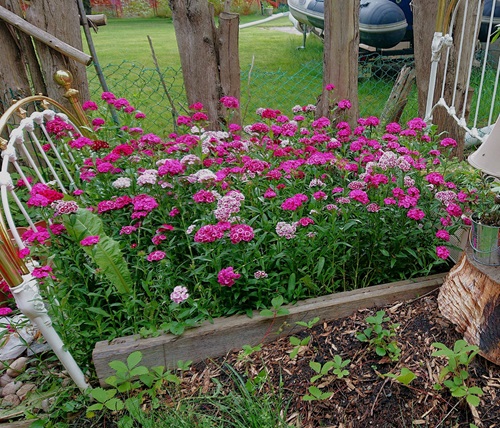These Short-Lived Perennials may have a brief bloom, but their secret powers ensure they live on long after they’ve faded. Read on!
Dead and forgotten? Far from it! These perennials have a life cycle that barely lasts a few years. Most of them bloom in the first few years of planting itself—and then they perish! So, what’s the point in growing such short-lived specimens? Won’t it mean more work? You have the questions, and we have the answers!
What is a Short-Lived Perennial?
The lifespan of most perennials unfolds in cycles: they grow, bloom, die back, and then regrow in spring. While perennials can resurface year after year, lasting for decades, short-lived ones complete their life cycle quickly, within 2-5 years.
In contrast to regular perennials that may take longer to bloom, short-lived perennials typically flower in the first year of planting. They are perfect for those who crave regular change or are constantly on the move.
These brief bloomers are unmatchable in suddenly perking up your garden with the most spectacular floral display! And just as you bid them goodbye with a heavy heart, they’ll mischievously sprout elsewhere.
Why? Because most of them are prolific self-seeders that keep their kind alive by spreading their seeds before fading! And therein lies their magic, ensuring they never really, truly die. Let’s check out the best ones for your garden.
Best Short-Lived Perennials
1. Hollyhock

Botanical Name: Alcea Rosea
USDA Zones: 2-10
Hollyhocks live just over two years, and due to their short lifespan, they are often categorized as biennials. However, in reality, anything over two years is a short-lived perennial.
These self-seeding plants grow quite tall, often reaching up to eight feet, with large blooms in pink, red, or white on spike-like racemes.
If you choose to grow one for yourself, try planting it in heavy, rich, organic soil where it gets full sunlight. It is quite cold-hardy as well. But watch out, as some weeds mimic this plant too, and you don’t want the wrong one growing in your garden!
2. Coral Bells

Botanical Name: Heuchera
USDA Zones: 3-9
If you want to amaze your friends with a short-lived perennial with stunning blue, purple, pink, green, or variegated foliage, this is the plant for you! They live for about 3-4 years, but you can extend their presence in your garden by dividing them regularly.
Although it is known for its leaves, its nickname—Coral Bells—comes from its tiny bell-like flowers.
This plant prefers well-drained soil and partial shade, but its hues intensify under full sun. It also attracts hummingbirds and other incredible pollinators to its blooms! Also, in its short lifespan, coral bells enjoy having these companion plants to hang around.
3. Coneflowers

Botanical Name: Echinacea
USDA Zones: 3-10
There are different types of coneflowers, but typically, they need to be divided every 3-4 years to keep them spreading. Dividing can boost their lifespan by ten times! You can easily spot these 4-foot plants with daisy-like blooms in versatile hues and dark centers.
Echinacea is a master adapter that can grow in a wide variety of conditions. Saline soil conditions, deer, drought, heat, and humidity have little to no effect on this plant. And it thrives in full sun to partial shade.
4. Yarrow
Botanical Name: Achillea
USDA Zones: 3-9
Yarrow is a short-lived perennial that usually lasts about 2-3 years but can, in rare cases, last a decade as well. It has feathery, fern-like fronds and small white or yellow flower clusters. You will likely smell it before seeing it, and its highly aromatic foliage also helps repel pests.
Yarrow is not picky about its growing conditions and can thrive in poor soil as long as it is well-draining. It will also benefit from full to partial sun and protection from strong gusts of wind.
5. Shasta Daisy

Botanical Name: Leucanthemum x superbum
USDA Zones: 4-9
With a lifespan of about three years, the Shasta Daisy may not be a forever plant, but it will make its stay worthwhile! It will beautify your garden with its iconic white petals and yellow centers. Depending on the cultivar, it can also be double-flowered and reach heights of four feet.
These daisies make excellent bordering or container plants. They thrive in full sun and well-drained soil.
6. Delphinium

Botanical Name: Delphinium
USDA Zones: 3-8
Also known as Larkspur, Delphiniums often grow freely in forests, woodlands, and mountains. They live for only about 2-3 years, but their gorgeous blooms in blue, purple, and white on tall spikes make up for this short life. But this beauty hides a secret: this plant is highly toxic, leading to severe health issues if ingested.
However, if you have no children or pets, go ahead and plant them in cool climes with full sun and rich, well-drained soil.
7. Tulip

Botanical Name: Tulipa
USDA Zones: 3-8
One of the most iconic short-lived perennials on this list is the tulip. It can live anywhere from 2 to 10 years! It is known for bright, cup-shaped flowers that emerge in almost every color imaginable.
Tulips grow from bulbs and have specific growing needs. They thrive in organically rich but well-drained, medium-moisture soil under full sun. However, they are picky about soil temperature, preferring about 70 F (21 C). Also, read this article to know how long their blooms last.
8. Iceland Poppy
Botanical Name: Papaver nudicaule
USDA Zones: 2-7
Iceland Poppies are hardy blooms that survive 2-3 seasons even in the harshest conditions known to a plant. They grow in extremely low temperatures, often below the 0-degree threshold. Their delicate, papery, fragrant flowers come in shades of white, yellow, or orange.
While most cultivars need cool climates and well-drained soil to thrive, some have adapted to warmer conditions as well.
9. White Tobacco
Botanical Name: Nicotiana sylvestris
USDA Zones: 10-11
Characterized by its rosettes of long-lasting white tubular flowers, White Tobacco is also a short-lived perennial with a natural lifespan of about 2-3 years. Despite the name, don’t try smoking this plant!
To see its blooms recur, ensure it reseeds robustly by growing it in moist, well-drained soil with ample morning sunshine. It prefers some afternoon shade.
10. Bearded Tongue

Botanical Name: Penstemon
USDA Zones: 5-8
The Bearded Tongue lives for about five years, but its prime visual appeal fades away after four years as the plant turns quite woody. It has a tall, slender physical form with tubular flowers in red, pink, purple, or blue.
Penstemon prefers full sun and well-draining, sandy soil.
11. Tickseed

Botanical Name: Coreopsis
USDA Zones: 4-9
This genus from the daisy family grows in bushy clumps but only for a limited number of years. Depending on the cultivar, tickseed can be annuals, biennials, or perennials. Common varieties like Coreopsis lanceolata last about 2-3 years, and then they need to be divided to ensure they spread beyond these years.
These plants survive in the most neglected conditions and hence add color to infertile, dry, saline, sandy, and rocky soils. Their long blooming season starts in spring and lasts until fall.
12. Hyacinth
Botanical Name: Hyacinthus orientalis
USDA Zones: 4-8
Grown from bulbs, hyacinths mature into foot-long plants known for their dense clusters of fragrant, colorful flowers. They exude such a strong scent that they are often used as natural deodorizers. However, this beauty and scent only last for 2-5 years as this perennial slowly dies away by the end of that period.
Hyacinth bulbs will develop into a thriving plant if sown in organically rich, well-drained soil. It can also survive in both full sun and partial shade. An expert tip is that since each bulb will produce a single flower, you can encourage more blooms by deadheading!
13. Lupine

Botanical Name: Lupinus
USDA Zones: 4-8
Out of its 300 species, most lupines can be grown as short-lived perennials. Under optimal conditions, they have a natural lifespan of about 2-5 years. They have tall spikes of pea-like flowers that appear in blue, purple, pink, and yellow, resembling a bottle brush.
Grow them in sandy, well-drained soil that is slightly acidic. Along with their wow factor, they are also practical! Lupines have the ability to fix nitrogen in the soil, which can improve soil quality for other plants.
14. Carnation

Botanical Name: Dianthus spp.
USDA Zones: 4-9
Dianthus is often grown as a biennial but can be nudged to live a few more years. However, if grown as a short-lived perennial, the plant loses its charm and becomes quite woody and spent.
In most cases, this starts after four years of its natural age. Often featuring darker, lighter, or different-colored edges versus the base of its petals, its delicate, fringed, fragrant petals are truly a sight to behold!
These edible blooms, often used to decorate cakes and desserts, love to bask in full sun. They also prefer ample air circulation and well-draining, slightly coarse soil.
15. Baby’s Breath

Botanical Name: Gypsophila paniculata
USDA Zones: 3-9
Not to be confused with the Gypsophila elegans, which is grown as an annual, Baby’s Breath is a short-lived perennial that typically lives for about 2-3 years. It is a top choice for florists and ornamental gardens due to its airy clusters of tiny white or pink flowers, which, from a distance, form the illusion of a cloud.
For best blooms, give this plant full sun and alkaline, well-draining, sandy soil. Deadheading will boost flowering. You can commonly spot it in floral arrangements or as fillers in bouquets.
16. Perennial Flax
Botanical Name: Linum perenne
USDA Zones: 4-9
Perennial Flax will beautify your garden in the summer year after year for about half a decade but usually starts looking dull after three years of blooming. This short-lived perennial has slender stems that grow out blue flowers and is often used as a border plant to show off its color.
Propagate these via seeds or cuttings, as it has sparse roots that cannot support division. It thrives in full sun and well-draining soil.
17. Painted Daisy
Botanical Name: Tanacetum coccineum
USDA Zones: 3-7
Painted Daisy is considered an annual in warmer parts of the world. However, it can naturally live for 2-3 years, making it a short-lived perennial. As its name suggests, it has flowers reminiscent of daisies, but the difference is the bright pink, red, or white petals and a yellow or dark center.
Its blooms also comprise pyrethrin, a compound that naturally repels insects. This plant thrives in full to partial sun and can adapt to different soil conditions, but it does best in well-drained, sandy to loamy soil.
18. Blanket Flower

Botanical Name: Gaillardia
USDA Zones: 3-11
Also known as the Indian Blanket, these are short-lived perennials of the daisy family and thrive in climates with mild winters. Native to the Americas, they produce large, radial flowers with warm-colored petals in red, orange, and yellow. However, they rarely live beyond three years but have a surprisingly long blooming season that only stalls during winter.
This plant thrives in full sun and well-draining soil and is quite drought-tolerant.
19. Columbine
Botanical Name: Aquilegia
USDA Zones: 3-9
Two to three years fly by, and before you know it, it’s time to bid adieu to your pretty Columbines! They are short-lived perennials with spurred flowers in blue, pink, yellow, and purple. If you are curious about the genus name Aquilegia, it comes from the Latin word for eagle, as its blooms resemble eagle talons.
Columbines have thick rhizomatous roots and thrive in well-drained, moist, average soil, especially in shady settings. These are perfect for adding color and flair as groundcover among larger plants.
20. Velvet Sage
Botanical Name: Salvia leucantha
USDA Zones: 7-11
Velvet or Mexican Bush sage is a member of the mint family. It grows up to three feet tall with fuzzy, bi-colored flowers that appear on spikes. You can propagate it via seeds, divisions, or stem cuttings.
Known for its medicinal properties, it thrives in rich, evenly moist, well-drained soil but can tolerate a bit of drought. It needs protection from direct, harsh afternoon sun.
21. Giant Hyssop
Botanical Name: Agastache
USDA Zones: 5-10
Often confused for the lavender herb, with similar spikes of purple and lilac blooms, the Giant Hyssop lives for about 2-5 years. Also a mint family member, this North American native has bottle-brush-like, fragrant blooms that grace gardens all summer.
It hates wet feet, as its roots are susceptible to rot. It prefers well-drained soil but, apart from that, is quite hardy and fuss-free!




